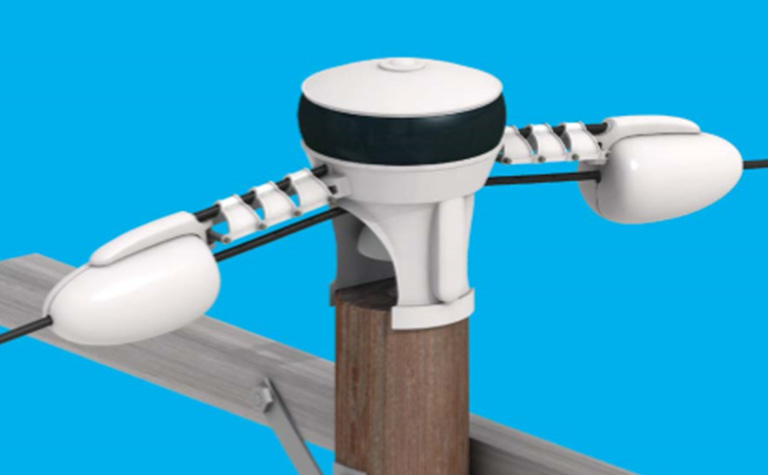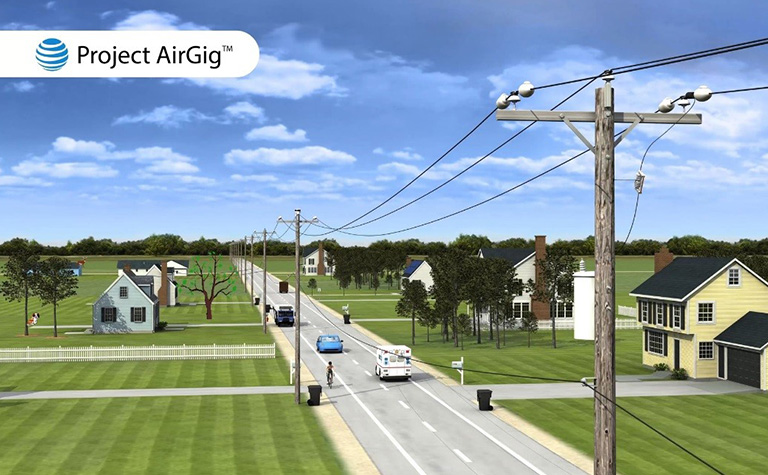Project AirGig is a 21st century technology. But it has roots in AT&T’s 143-year old legacy of innovation. Irwin Gerszberg, one of the lead inventors of Project AirGig, has fond memories of AT&T Bell Labs as a boy growing up on a rural NJ chicken farm in the 1960’s.
He remembers hearing about the invention of the transistor and aspiring to work at AT&T and become a great inventor like the ones he read about in the newspapers. He joined AT&T shortly after college at the company’s AT&T Bell Telephone Laboratories in Holmdel, NJ. That was 40 years ago.
In 2012, under Irwin’s direction, a team of just several people began exploring the possibility of delivering high speed broadband over power lines between the Internet Service Provider (ISP) and a neighborhood utility pole. From there, homes and offices would be close enough to connect wirelessly. Until then, the idea of delivering electromagnetic waves over wires was a mere abstract concept.
Irwin's team of scientists wanted to bring this concept to reality. Their first experiments sending electromagnetic waves over wires were basic. They built prototypes using items from a local auto parts store like plastic funnels covered with aluminum foil. They placed them next to unenergized power cables. Surprisingly, they found they could successfully send electromagnetic waves over this equipment.
They took their equipment outdoors and conducted more tests on 150-foot long power lines between 35-foot tall utility poles at AT&T’s Middletown, NJ campus. It still worked. The team had a feeling they were on to something.
It was July 2013. After successfully testing the initial concept, Irwin’s team had waded into unchartered scientific waters. More people wanted to get involved. Project AirGig caught the attention of AT&T Labs executives. Suddenly, a simple science project became a funded corporate project. More sophisticated experiments were conducted, advanced prototypes were built, supercomputers purchased for complex simulations, and a couple years later – live field tests were launched on real powerlines in real neighborhoods in two major cities.
Today, the Project AirGig team has secured more than 500 patents and applications related to the technology, which all ladder up to a multitude of “mini-inventions” that make up Project AirGig. Here are 3 of the most exciting inventions the team has discovered on this journey so far.
1) Plastic Receivers: The team has invented plastic transmitters that send electromagnetic waves over (but not through) the power line. A unique hinged design allows the egg to be easily snapped over the power line, reducing installation costs to a minimum.

2) Two-Way Smart Grid: With Project AirGig, we could collaborate with utility companies as they evolve toward the “smart grid”. Utility companies can use Project AirGig capabilities in place for real-time management of their power lines. This could enable a wide variety of smart-grid applications, such as support for meter-reading, solar and wind energy, appliance and usage-control systems, as well as detecting and pinpointing the location of power-line disruptions, such as encroaching tree branches or actual line breaks.

3) Potential for High Speed Internet Globally: Project AirGig has opened the door to the possibility of broadband Internet connectivity for nearly everyone currently served by an electric utility. It’s a first-of-its-kind technology that is expected to deliver broadband connectivity to homes and mobile devices wherever there are power lines — whether urban, rural or underserved parts of the world. Project AirGig could be the answer to solving the global digital divide.

While Thomas Edison and Nicola Tesla invented electricity in the late 1880s, it was Irwin’s team of scientists that discovered how to transmit high-speed broadband over the same cables that deliver electricity. While Edison gave the world the light bulb, Irwin’s hope is that Project AirGig will one day light up the world in a different way – with high speed broadband internet.


